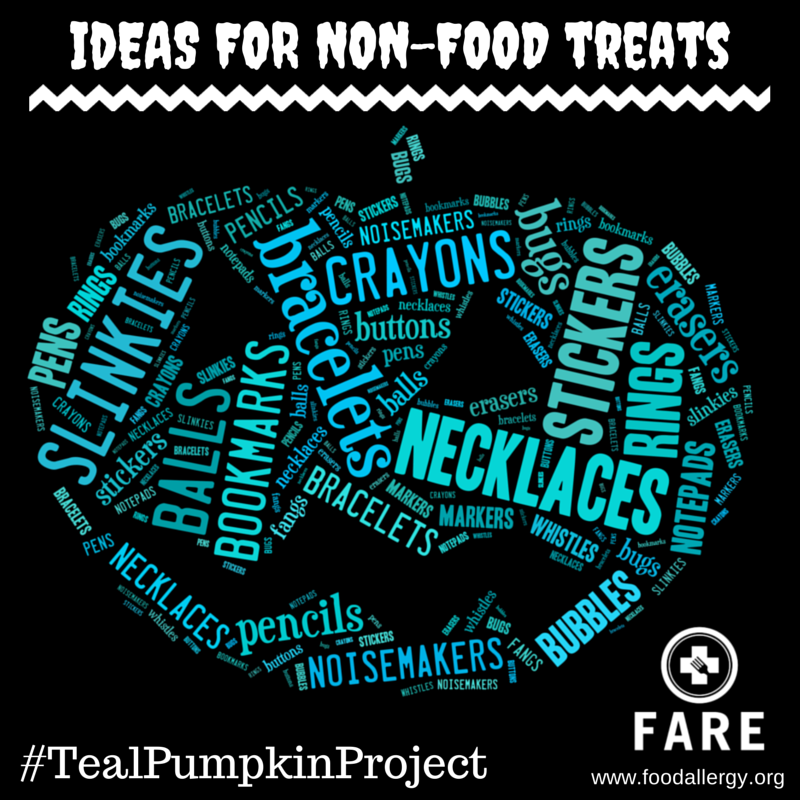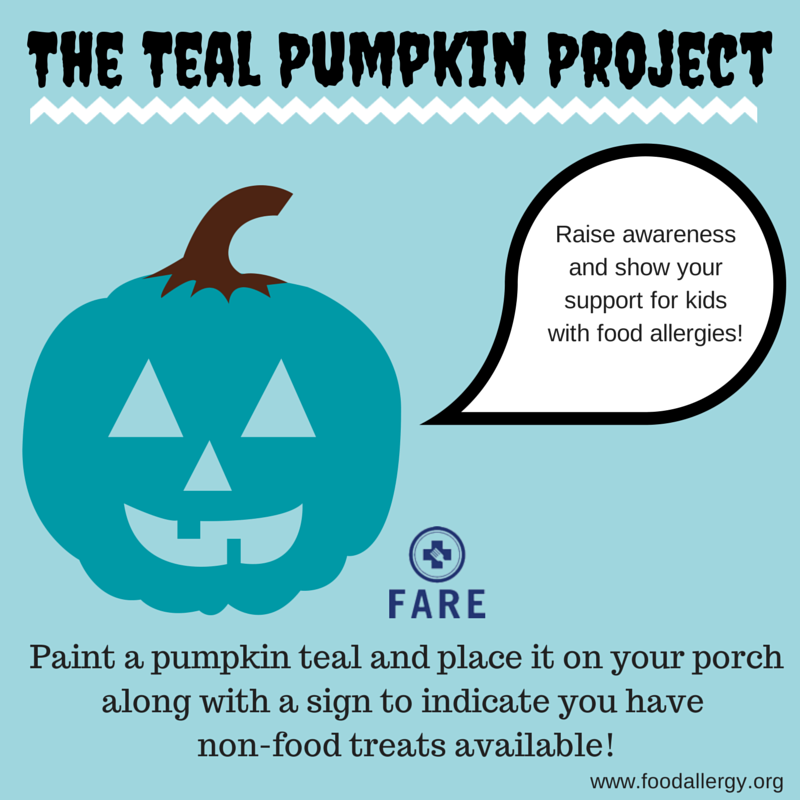For most kids, Trick or Treating is an exciting event. But, for children with food allergies, it can be quite scary. Chocolate can be terrifying if you are allergic to milk, and a candy bar with nuts can be life-threatening for some children. Eggs, soy, wheat and certain food dyes are other common ingredients that cause food allergies, which means finding safe treats on Halloween can be a real challenge.
To help kids with food allergies feel safe this year, while still being able to enjoy in Halloween festivities, the Food Allergy Research & Education (FARE) organization started the Teal Pumpkin Project.
This campaign encourages people to raise awareness of food allergies by placing a teal-painted pumpkin (the color of food allergy awareness) outside their door if they will be offering non-food treats, such as stickers, pencils or small toys. You can also hang a free printable poster from FARE to indicate what the project is about. According to their website:
The Teal Pumpkin Project is designed to promote safety, inclusion and respect of individuals managing food allergies – and to keep Halloween a fun, positive experience for all.
Here are some ideas from FARE for non-food treats:
• Pencils, pens, crayons or markers
• Bubbles
• Glow sticks, bracelets, or necklaces
• Erasers
• Whistles, kazoos, or other noisemakers
• Bouncy balls
• Finger puppets
• Spider rings
• Playing cards
• Bookmarks
• Stickers

For those that don’t want to purchase non-food items, it is still helpful to separate allergy-free candy from candy that may trigger an allergic reaction. Many food allergies only require a small amount of the allergen to trigger a reaction, so cross-contamination is a major concern. Make sure to read candy packaging carefully for potential allergy causing ingredients like nuts, milk, eggs, soy, wheat, and food dyes.
Food allergies affect 1 in 13 children in the United States. The Teal Pumpkin Project is a way to ensure kids with food allergies can enjoy a safe and fun Halloween, just like their friends. The project is even being extended to families who are managing other diseases, like diabetes and celiac disease, which affect what children can eat.
In addition to participating yourself, you can help spread the word by distributing this poster in your local community and sharing the picture below on social media with the hashtag #TealPumpkinProject.
Source: Food Allergy and Research Education. (2014). The Teal Pumpkin Project. foodallergy.org/teal-pumpkin-project
Written by:
Bridgette Kidd, Healthy People Program Specialist, Family and Consumer Sciences, Ohio State University Extension
Reviewed by:
Lisa Barlage, Extension Educator, Ross County, Family and Consumer Sciences, Ohio State University Extension
Pat Bebo, Leader, Community Nutrition Programs, Ohio State University Extension



